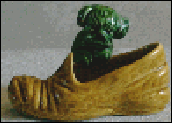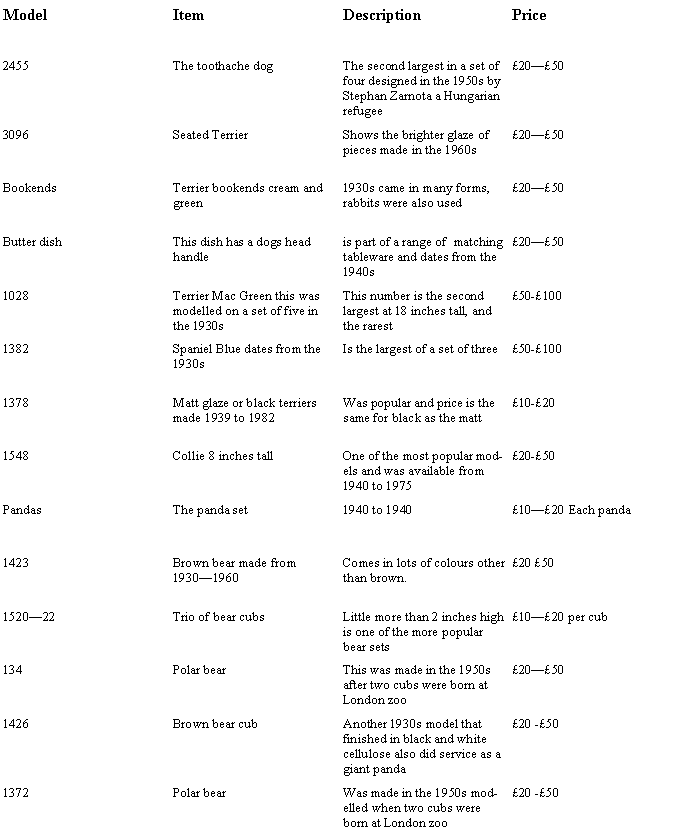|
The SylvaC range of model animals, first produced as cheap and cheerful ornaments, is the focus of a fast growing collectors market. One of the liveliest collectors markets of the last decade has been that for SylvaC ware, produced by the firm of Shaw and Copestake at the Sylvan works in Longton, Staffordshire. From its beginnings in 1894, the factory produced highly ornate vases, clock sets, jugs and basins, but in the late 1920s there was a dramatic increase in production with the introduction of new lines of a different kind, the novelties and fancies. Around 6,000 different lines were produced, including ornaments, ashtrays, vases, bowls, wall plaques, vases, cups, character jugs, plates and money boxes.
It is in these fancy wares that are enjoying great popularity nowadays, particularly the animal products and animal related pieces that were produced originally for the cheaper end of the giftware market. Unusual pieces are now sought after. Over the years, several different finishes and glazes were used and experimented with, but it is the coloured matt glazes that interest the collectors today.
In the 1930s, these popular wares were given the brand name SylvaC, form the name of the works and the initials of the firms founders. The majority of models were also given a mould number, usually found impressed on the base, the numbers did not run in sequence. The main reason for this was that the firm was associated with Thomas Lawrence , makers of Falcon ware, who used a similar numbering system on their models. Identical wares where produced bearing either the SylvaC or Falcon Ware back stamp and sometimes both of them can be seen together. The two companies actually amalgamated in 1957. SylvaC continued in production until 1982 when the company went into voluntary liquidation.
NOTE
As a rule, because the matt glaze wares are easier to identify and more collectable, they tend to be at the higher end of the price range. It is easier to find a bargain in the earlier production cellulose items. These are marked Made In England, with an impressed number, and are not always recognised as SylvaC. Bright glaze pieces, most of which date from the 1950s, are often credited to other potteries because of their unclear markings. These can be bought fairly cheap.
As with any massed produced pottery, quantity, rather than perfect quality, was the order of the day, so it is not unusual to find pieces with some glaze missing and lumps and chips glazed over. Many also appear with fine crazing in the glaze. This need not affect the price, but cracks that go thought both sides of the pottery body is a different matter. Try to examine the pieces in a good light before buying. Damaged pieces should be avoided, or at least have a great reduction on the price. An increasing number of restored pieces are appearing, careful examination in a good light should reveal these.
Since the Shaw and Copestake factory stopped operating , many of the original SylvaC moulds have been sold onto other firms, and copies of the animal figures have surfaced. Not strictly fakes, these pieces have a finish that bears little or no resemblance to the original SylvaC.
|
|



